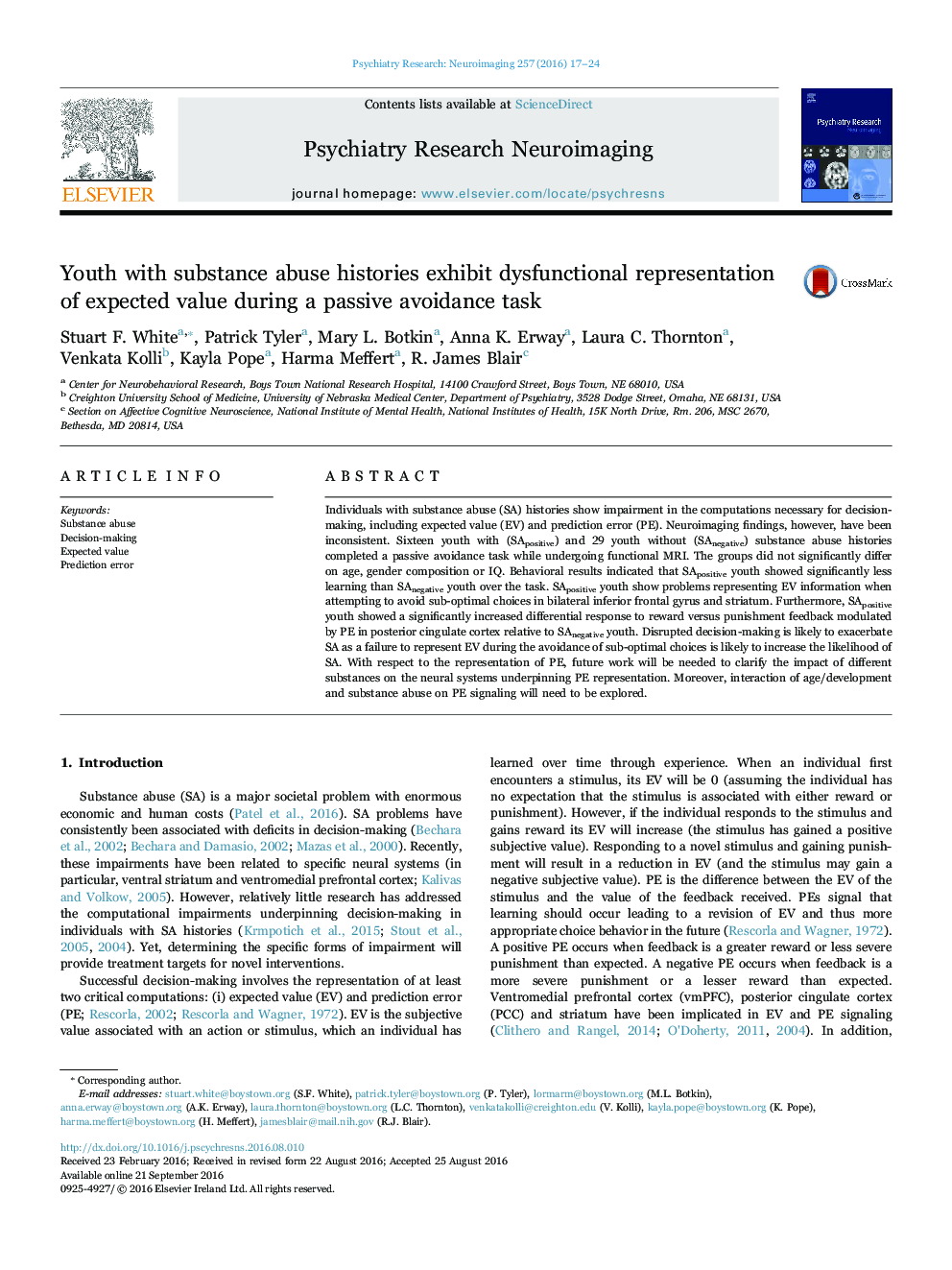| Article ID | Journal | Published Year | Pages | File Type |
|---|---|---|---|---|
| 4934039 | Psychiatry Research: Neuroimaging | 2016 | 8 Pages |
Abstract
Individuals with substance abuse (SA) histories show impairment in the computations necessary for decision-making, including expected value (EV) and prediction error (PE). Neuroimaging findings, however, have been inconsistent. Sixteen youth with (SApositive) and 29 youth without (SAnegative) substance abuse histories completed a passive avoidance task while undergoing functional MRI. The groups did not significantly differ on age, gender composition or IQ. Behavioral results indicated that SApositive youth showed significantly less learning than SAnegative youth over the task. SApositive youth show problems representing EV information when attempting to avoid sub-optimal choices in bilateral inferior frontal gyrus and striatum. Furthermore, SApositive youth showed a significantly increased differential response to reward versus punishment feedback modulated by PE in posterior cingulate cortex relative to SAnegative youth. Disrupted decision-making is likely to exacerbate SA as a failure to represent EV during the avoidance of sub-optimal choices is likely to increase the likelihood of SA. With respect to the representation of PE, future work will be needed to clarify the impact of different substances on the neural systems underpinning PE representation. Moreover, interaction of age/development and substance abuse on PE signaling will need to be explored.
Related Topics
Life Sciences
Neuroscience
Biological Psychiatry
Authors
Stuart F. White, Patrick Tyler, Mary L. Botkin, Anna K. Erway, Laura C. Thornton, Venkata Kolli, Kayla Pope, Harma Meffert, R. James Blair,
